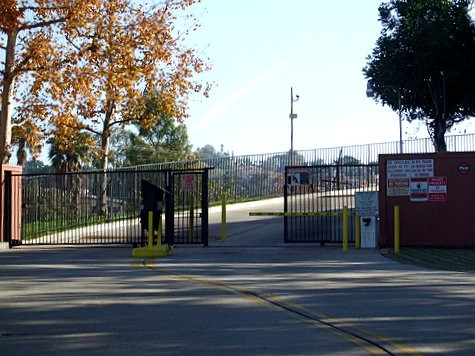‘Gated communities’ are not necessarily safer

Posted January 14, 2010 at 1:35PM
Subdivisions secured by gates intended to exclude outsiders may not be safer than those that are fully public. This is because they can lack the social cohesion and interaction with the larger community that for millennia have served as deterrents to crime and other antisocial behavior.
Members of the economic upper class (or those who wish to be seen as such) have sought refuge in “gated communities,” which collectively house some 12 percent of Americans, over the last couple of decades. “Gated” they certainly are, but the extent to which they are “communities” is open to debate. Environmentally, there is no doubt that they severely limit street connectivity, which in turn lengthens walking and driving distances.
A desire to prevent crime (presumably committed only by outsiders) is sometimes cited as a rationale for privatizing and sealing off what would otherwise be public space, but the theory may not be sound. Writing in The Charlotte Observer’s blog The Naked City, Mary Newsom reports on a recent public appearance by Charlotte police chief Rodney Monroe:
“After giving a short presentation Monday to the Charlotte-Mecklenburg Planning Commission, planning commissioner Nina Lipton asked the Charlotte-Mecklenburg police chief whether he had any data on safety in gated versus nongated communities.
"’We looked at that,’ Monroe said. The police and planning departments matched up communities as closely as they could, looking at income levels, multi-family, single-family and other factors. In terms of crime rates, Monroe said, ‘We saw no difference.’
"What matters in terms of neighborhood safety, he said, is who's living there: Are residents looking out for their neighbors? Are they taking responsibility? If it's a rental community, is there professional management? Are renters being screened for criminal records?”
Peer Smets of VU University Amsterdam studies social and cultural characteristics of neighborhoods. He concludes that, in some ways, gated developments can actually increase fears of crime:
“An increasing number of middle and high-income groups have looked to security measures, such as cameras, fences, walls and gates, to separate themselves from other people in the city. These physical measures, in combination with hired guards, replace the ‘older’ social control mechanisms, which are based on social cohesion within the community concerned . . .
“Within their own enclave these residents tend to live in a bubble with its own system of governance, which enables them to escape the ‘unsafe’ external world. Once these upper and middle class residents are ‘fenced’ in against insecurity, their sense of a lack of safety tends to grow. These residents are caught in a paradox between individual freedom and employing social control to cope with criminality. Intensifying feelings of insecurity and lack of safety helps the private sector by creating a market for security technology and guards.”
Smets also comments on the propensity of gated developments to create and enforce their own systems of taxation and behavior regulation:
“Restrictions concerning property and codes of conduct are often rigid and even repressive. When these rules are transgressed, people are fined and liens may even be attached to their house. The rules can go so far that the daily lives of gated enclaves will to a large extent be regulated. Examples of prohibitions in American gated communities are:
- spouses below a certain age are not allowed to stay overnight
- pets above a certain weight were forbidden
- children are not allowed to live there
- a grandmother was fined for kissing a friend goodbye at her front door
- a family was prohibited from using their back door because they had to pass an unsightly path
- children were forbidden to play with metal tools, because only wooden ones were allowed
- residents were fined for displaying election signs (overruled by the Supreme Court).”
Residents of some gated developments, reports Smets, have become so disconnected from their larger communities that they have even sought tax rebates, on the theory that their homeowners’ associations provide services that obviate those offered by municipalities.
Now, dysfunctional regulation and isolation are certainly not limited to private subdivisions. But sealing off the neighborhood certainly doesn’t help. I believe that society functions best when people share participation in and a sense of responsibility for the common good, including each other’s welfare, the welfare of people unlike ourselves, and the resources we share. That’s genuine community, and it doesn’t require gates and walls to define itself.
